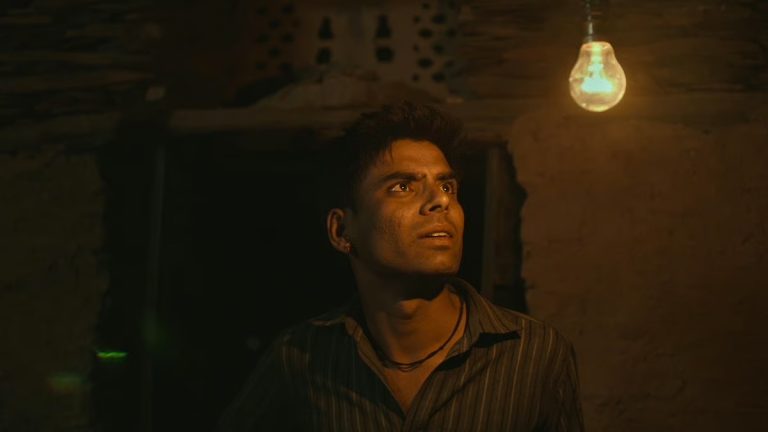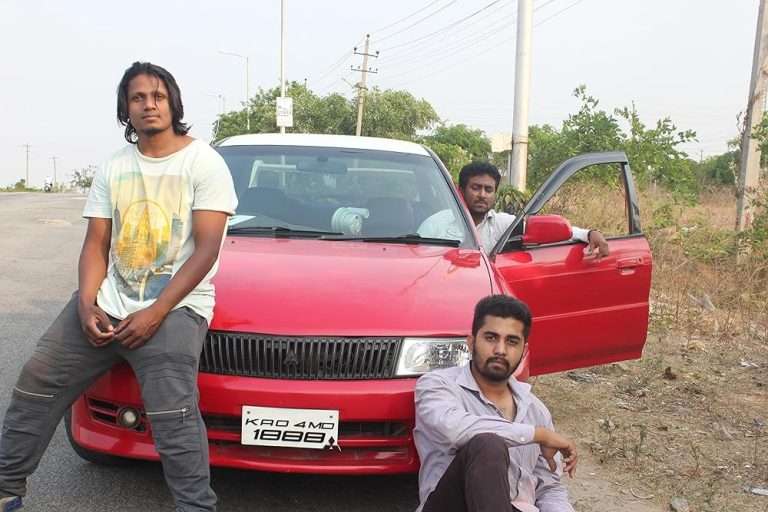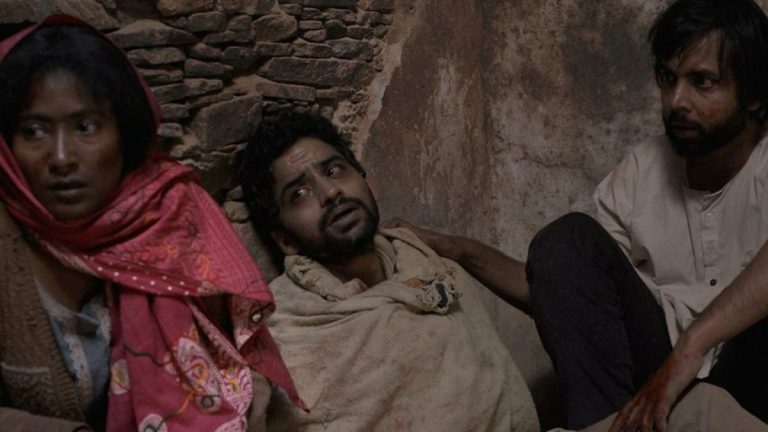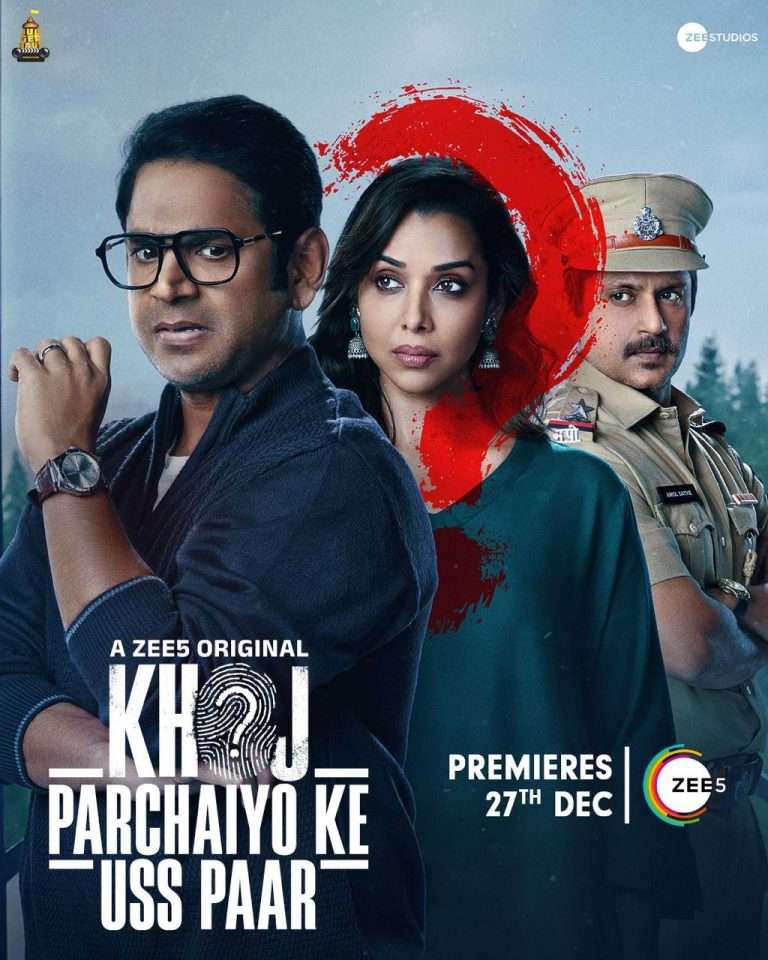Jeetendra Kumar is a familiar face for anyone inundated with streaming content or the OTT space. Arguably one of those actors who gained newfound popularity and fandom within that streaming substrate, his roles bring forth a relatability that is hard to deny and an old-school charm that is easy to root for and follow.
“Bhagwat – Chapter One – Rakshas” (2025), a movie with some glaring flaws, does boast of an unpredictable performance of Jitendra Kumar, who essays a role of an antagonist for the first time in his career. He cleverly subverts his usual shticks to produce a captivating and uneasy portrayal of a serial killer.
On occasion, for the release of “Bhagwat – Chapter One – Rakshas” (2025), we at High on Films had the opportunity to interact with Jitendra Kumar to discuss with him one of the most challenging roles of his career.
The interview has been translated, transcribed, and condensed wherever necessary for clarity.
Amartya Acharya: There is a school of actors who grew up within the OTT space and became legitimate breakout stars. I am perfectly confident in naming you as one of those stars. On my end, I have been following you ever since Pitcher Season 1, and your portrayal of the world-weary, yet relatable everyman that you bring to the table. How much of a challenge then was to play the antagonist role in “Bhagwat – Chapter One – Rakshas”? How did it affect your acting process? Was it instinctual, or was it a detailed briefing on the part of the director?
Jitendra Kumar: I think my process was the usual. It depended more on the brief of the directors and writers this time, because they had advised me to avoid doing too much research on the subject. Thus, I had to execute what was in the script itself. So the briefing mattered more for this project. But it was challenging, because this was my first time doing such a role, playing a character having so many variations on his characterization and emotions, and those change moment to moment. That’s what made it challenging. But my process remained the same, and the briefing of director helped tremendously to portray this character.
Amartya Acharya: Within the OTT space, you have dabbled in both the web series and feature film substrate. Is there a preference on your end, and how do you choose your projects? What drives you while choosing a character like Jeetu Bhaiyaa in Kota Factory, Abhishek Tripathi in Panchayat, and Sameer in “Bhagwat – Chapter One – Rakshaas”?
Jitendra Kumar: Mostly the world. How fresh the world is within the story, and if that story is engaging enough to me as an audience – that’s the criteria I choose in my stories. I believe if the stories are good, if they are written well, the characters are, resultantly, written well. Without good characters, it is almost impossible to write a good enough story as well.
So one of the primary reasons for liking a story might be the characters within that story. I don’t worry too much about the character assigned to me. If the story is interesting, an engaging listen, and easy enough to visualize for me, that matters more in choosing a project. So it’s just the story, the freshest of the stories.
Amartya Acharya: Two moments are etched in my memory regarding this film. One is the interrogation sequence of Sameer by Bhagwat, and Sameer’s determined nonchalance. The other is the courtroom sequence with the almost wordless battle of wills between Bhagwat and Sameer. How difficult was it to shift gears as a character from the charming everyday man to the “demon”?
Jitendra Kumar: It was very challenging because for this character, you have to provide a different expression for each moment, and provide variations on his behavior. Of course, since you have seen the movie, you know that there are multiple scenes where we see the character switch on and off. So it was quite challenging. We used to do multiple takes. The first five or so days, we tried multiple things to check which one would work, and after 5 – 6 days, we finally managed to catch that singular thread in the character.
Also Read: Bhagwat Chapter One: Raakshas (2025) Review: Bland Police Procedural Rendered Watchable by Arshad Warsi and an Against-The-Type Jitendra Kumar
The threadline that allowed us an entry into the character and took the character forward. So by the time that scene arrived, we were much clearer. That interrogation scene was quite possibly the 15th or 16th day of shooting, and by that point, both the director and I were on the same page regarding the character. I had a little more clarity regarding my expressiveness or mysteriousness in the exhibition of the character. Since it was a very important and very pivotal scene in the film, we were very meticulous and thorough regarding that scene, doing multiple takes, working on minute details. I am glad that those scenes translated on screen so well for the audience.

Amartya Acharya: As an addition to the previous question, how was it like working and sharing screen with an experienced veteran actor like Arshad Warsi?
Jitendra Kumar: Arshad Sir is a fantastic and wonderful actor. You experience pleasant vibes whenever you meet him. Whenever he comes on the set, he tries to keep it very stress-free by cracking jokes. It’s a very fun environment to work in overall, whenever I am shooting with Arshad sir.
On-screen, he is just bang-on with whatever emotion he has to translate on screen, and he manages to accomplish that in a very engaging fashion. As an actor, whenever you have a great co-actor on set or in a scene acting opposite you, you feel energised, your flaws and shortcomings relatively suppressed, and Arshad sir was very helpful in that regard. So it was great fun working with him.
Amartya Acharya: I am curious about your future projects. We are hearing a lot of stuff online that is in the pipeline, so if you could share something for your fans.
Jitendra Kumar: Yes, I am working on a host of interesting stuff, some films, a couple of OTT shows. There is a lot of interesting work in progress, and hopefully I will be able to share it with you all soon. Yes, a lot of things are in the works.
Amartya Acharya: Last question, before we end this; since we’re called “High on Films,” could you share five movies that you believe represent the peak of cinema? Basically, five of your favorite films from around the world that you want to recommend to our viewers.
Jitendra Kumar: Oh, this is a very difficult question. I will tell you about my favorite films that have brought about a meaningful change in my life, and also brought about a change in the film industry. The first three films – “Bicycle Thieves” (1948), “Anand” (1971), and “Fight Club” (1999) – are very inspiring to me; instrumental in changing my perspective about films.
My all-time favorite film is “Dil Se” (1998). I believe major changes in the Hindi film industry – in terms of filming and a varied approach to storytelling – were brought about in the 70s due to the release of “Sholay” (1975).
Post that the entry of Shahrukh Khan in the industry, the films he was involved in, and the characters he had played in the initial stages of his career, brought about a new approach within the film industry.
Movies like “Raju Ban Gaya Gentleman” (1992), “Baazigar” (1993), “Darr” (1993), “Anjaam” (1994), and, of course, “Dilwale Dulhania Le Jaayenge” (1995) brought about a change in the Hindi film industry. Then, of course, came “Satya” (1998). When I had first watched Satya, I discovered an entirely different form of storytelling on screen.
Amongst Hollywood films, my favorite is “The Departed” (2006). “Inception” (2010) is also one of those films that led to Hollywood and the films of Christopher Nolan making a mark globally, and changed the perspective of cinema as a whole. So these are the films I love watching again and again, and have contributed a lot to the film industry.










